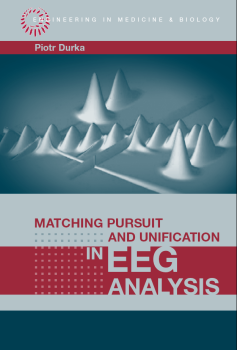Contents of This Book (online table of contents)
Digital revolution opens amazing possibilities, but computers do not think for us. To be responsible for the results, we must understand what we are doing. In biomedical sciences, "we" cannot relate only to mathematicians and engineers. Therefore, the first part of this book gives a minimal necessary background in signal processing, using only plain English and no equations. Starting from basic notions like sampling of analog signals, inner product, orthogonality, and uncertainty principle, through spectral and time-frequency methods of signal analysis (spectrogram and wavelets), we arrive at the idea of adaptive approximations and the basics of the matching pursuit algorithm. Chapters 6 and 7 summarize major advantages and caveats related to its applications, with references to examples from Part II.Each of the applications presented in Part II explores some particular and unique feature of the matching pursuit. Starting from the explicit parameterization of signal structures in terms of their amplitudes, time widths and time and frequency centers, through high-resolution and robust estimates of time-frequency energy density and their averages in event-related paradigms, to selective estimates of the energy of relevant structures, which improve the sensitivity of pharmaco-EEG and stability of EEG inverse solutions. Similar to Part I, these presentations are basically equation-free. Software used in these studies is freely available from EEG.pl
For the mathematically oriented readers, Part III introduces formally adaptive approximations and related technical issues, including the mathematical tricks necessary in efficient implementations of the matching pursuit algorithm.
